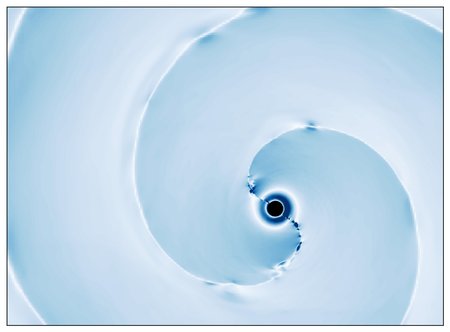Earth’s night skies are receiving a surprise visitor this month.
Comet C/2022 E3 ZTF will be making its closest approaches to both Earth and the sun in the coming weeks. The comet was first discovered in March 2022 by astronomers at the Zwicky Transient Facility, part of the California Institute of Technology’s Palomar Observatory, when it was 399 million miles (643 million kilometers) from the sun, just inside the orbit of Jupiter. Since then, comet C/2022 E3 ZTF has moved much closer to the sun and Earth.
In fact, at 11:00 p.m. EST on Jan. 12 (0400 GMT on Jan. 13), the comet will make its closest approach to the sun, known as perihelion. During this time, skywatchers might be able to observe the comet with the naked eye, if conditions are right, you should be able to find it with binoculars or a telescope. Even if you don’t have the right conditions or optics to spot C/2022 E3 ZTF, you can watch a free live webcast courtesy of the Virtual Telescope Project via its website (opens in new tab) or its YouTube channel (opens in new tab).
Related: Watch a comet make its closest approach in 50,000 years online next week

Comet C/2022 E3 ZTF has an orbital period of 50,000 years, meaning it hasn’t approached Earth since the Upper Paleolithic period, the time of very early Homo sapiens and the Neanderthals.
Not only has the comet not visited in quite some time, but this could also be the last time it comes our way. Its orbit is not closed, meaning it does not return to the same angular position at which it began. Because of its highly parabolic orbit, C/2022 E3 ZTF will zoom back out into deep space after it makes its closest approach to Earth — perhaps never to return again. Jessica Lee, an astronomer at Royal Observatory Greenwich, told Newsweek (opens in new tab) that “predictions suggest that the orbit of this comet is so eccentric it’s no longer in an orbit — so it’s not going to return at all and will just keep going.”

Several astrophotographers around the world have already caught gorgeous images of the comet as it zips through the solar system. Its coma, the cloud of gases and debris that surrounds the comet’s nucleus, has a distinctive green color in photographs due to its chemical composition. The green color suggests the presence of diatomic carbon, or dicarbons, molecules with two carbon atoms bonded together.

Comet C/2022 E3 ZTF should be viewable throughout the month, not just at perihelion on Jan. 12. Following this close approach to the sun, the comet will pass within 26 million miles (42 million km) of Earth on Feb. 2.
Comet C/2022 E3 ZTF presents an excellent skywatching opportunity for skywatchers of all levels. If you don’t have the gear you need (or want!), be sure to peruse our guides for the best binoculars and the best telescopes to view the comet or other objects of interest in the sky. For taking the best comet images you can, we have recommendations for the best cameras for astrophotography and best lenses for astrophotography.
Follow Brett on Twitter at @bretttingley (opens in new tab). Follow us on Twitter @Spacedotcom (opens in new tab) or on Facebook (opens in new tab).


